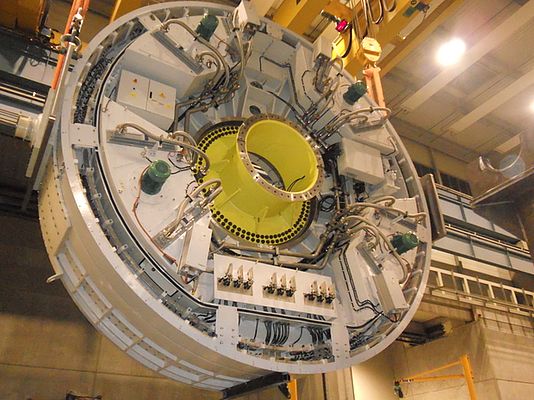Ask most people to picture a wind farm and they imagine deep blue skies, gently rolling hills or waves upon the ocean with giant white blades calmly turning against the breeze; a grand symbol of engineering excellence and the technological advancement of our current era.
However, weather often has other plans for our idyllic setting, especially for offshore wind farms where conditions are constantly harsh. It's thanks to this abundance of wind that offshore farms make sense, but it often also makes it too dangerous for regular access or maintenance.
Yet regardless of the weather, it can still be expensive and challenging to perform maintenance work. Support vessels costs upwards of $10,000 a day. It takes time to source spare parts and it also takes time and resources to train staff. Therefore the secret to mitigating the complexity and cost is to try to avoid unplanned maintenance and minimize down time. As such, reliability has become a critical requirement for offshore wind operators.
It has become even more crucial as the Global Wind Energy Council projects that offshore wind will deliver 10% of global installed wind capacity by 2020, up from 2% in 2012. Today, over 8GW of offshore capacity is already installed, mostly in Europe, with much more planned in the Americas, China and beyond. To meet these challenges operators are increasingly turning to permanent magnet generators (PMG) leading to greater overall mechanical reliability.
GE Power Conversion's direct drive system has no mechanical gearbox coupled to the generator. This increases reliability and the turbine's availability, while the elimination of the gearbox allows for higher efficiencies.
The high reliability also leads to increased production time and fewer maintenance house calls, ultimately driving down the cost of wind energy. High levels of redundancy enable power to be continuously produced even when running in the "degraded" mode - which occurs when one or two of the electric channels are down for any reason. As it is almost impossible to make immediate fixes to offshore wind turbines, this element of redundancy is absolutely critical to their success. But this is only half of the story. The next generations of offshore wind turbines are massive.
They have wind blades stretching out to 73.5 meters, sweeping over an area that can almost span four Airbus A380s. These wind turbines require a 'large' generator that has a high power output, and yet stays compact and light to ensure outstanding reliability of the wind turbine's drive train.
This is why GE Power Conversion has been developing the technology for over five years and now manufactures a 6MW direct drive permanent magnet generator (PMG), one of the world's largest wind generators installed and operated in an offshore environment to date. To put this in context, 6MW of power will enable a single wind turbine to supply enough power for 5,000 households per annum.
The use of PMG also leads to better generation efficiencies; for instance, it allows the Alstom Haliade™ 150-6MW to achieve a 15% improved yield compared to the previous generation of offshore turbines. Such PMGs have already been successfully installed in two locations, one in Le Carnet, France and the other in Ostende, off the coast of Belgium.
As more offshore wind farms are commissioned across the world, advanced developments that increase the output and reliability and therefore reduce the cost of wind power, like the 6MW direct drive permanent magnet generator, will become increasingly vital.
Where the Wind Blows
GE Power Conversion developed a 6MW direct drive permanent magnet generator (PMG), one of the world’s largest wind generators installed and operated in an offshore environment to date. This Generator allows wind turbine to operate continuously
- by GE Power Conversion
- May 29, 2015
- 123 views


















